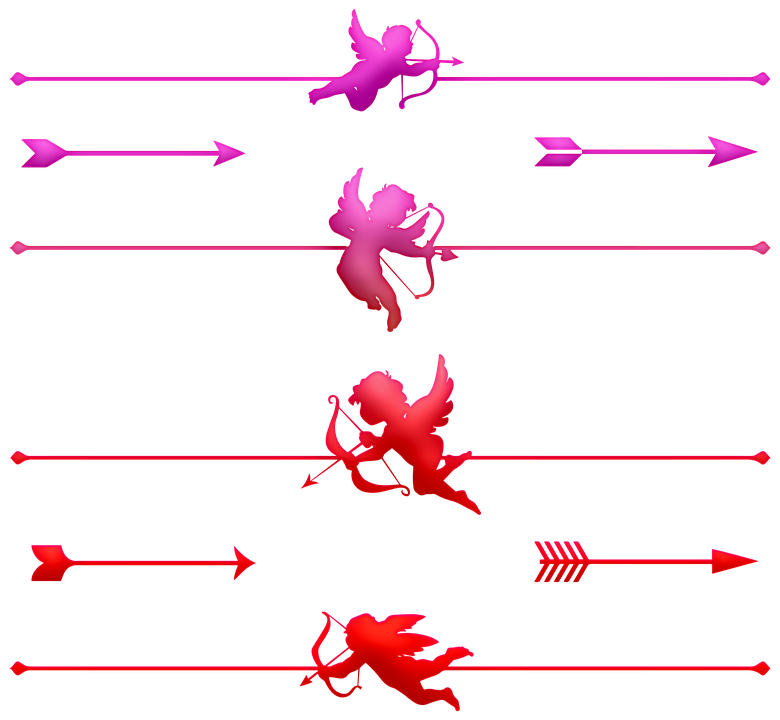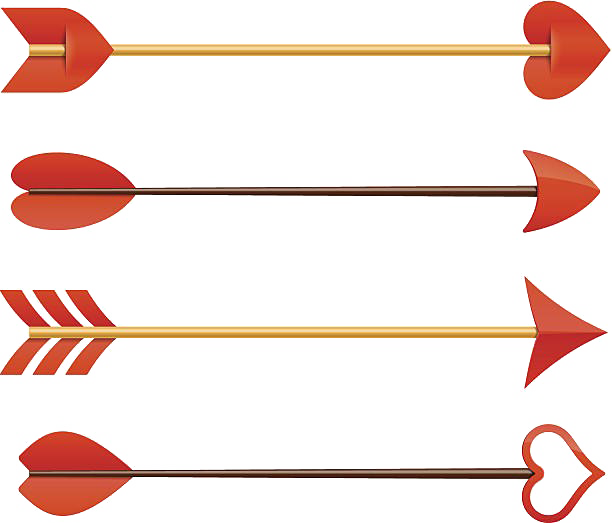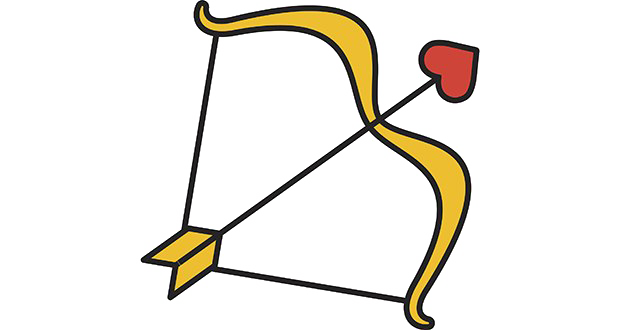Download top and best high-quality free Cupid PNG Transparent Images backgrounds available in various sizes. To view the full PNG size resolution click on any of the below image thumbnail.
License Info: Creative Commons 4.0 BY-NC
Cupid is the god of desire, erotic love, attraction, and tenderness in Greek mythology. He is frequently shown as the son of Venus, the goddess of love, and Mars, the god of war. In Latin, he is also known as Amor (“Love”). Eros is his Greek equivalent. Although Eros is usually shown as a thin winged adolescent in Classical Greek art, he was frequently depicted as a chubby kid throughout the Hellenistic period. During this period, his iconography incorporated the bow and arrow, which signify his source of power: a human, or even a god, who is hit by Cupid’s arrow is overcome by unquenchable lust.
Cupid is a minor figure in Greek mythology who mostly helps to set the story in motion. He only appears in the Cupid and Psyche tale, when he is wounded by his own weapons and goes through the torment of love. Although there are no additional long stories about him, his legend is rich with poetic ideas and visual settings, such as “Love conquers all” and Cupid’s vengeful retribution or torment. His abilities resemble, but are not identical to, those of Kamadeva, the Hindu deity of human love.
Cupid is frequently shown in art as the Amores, or amorini in later art history nomenclature, the Italian analogue of the Greek erotes. Cupids are a common motif in both Roman and subsequent Western art from the classical period. Cupid’s iconography becomes indistinguishable from putto iconography in the 15th century.
Cupid remained a popular figure in the Middle Ages, when he had a dual nature as Heavenly and Earthly love due to Christian influence. A renewed interest in ancient philosophy throughout the Renaissance provided him with rich metaphorical implications. Cupid is commonly depicted as a symbol of Valentine’s Day in modern popular culture, drawing his bow to inspire passionate love.
In their own literature and art, the Romans adapted Greek Eros stories and notions for Cupid, and medieval and Renaissance mythographers freely combine the two. Eros had a dual, conflicting ancestry in Greek mythology. He was one of the asexually created primordial gods; following his generation, deities were created through male-female couplings.
Only Chaos and Gaia (Earth) are older in Hesiod’s Theogony. Eros functioned before the creation of gender distinction by forcing entities to separate that which they already contained.
Simultaneously, the Eros shown as a boy or slender youngster was thought to be the offspring of a heavenly pair, the identity of whom changed depending on the source. In his chapter on Cupid/Eros, the famous Renaissance mythographer Natale Conti stated that the Greeks even were unclear of his parentage: Heaven and Earth, Ares and Aphrodite, Night and Ether, or Strife and Zephyr. He points out that the Greek travel writer Pausanias contradicts himself by claiming that Eros welcomed Aphrodite into the world at one point and then that Eros was Aphrodite’s son and the youngest of the gods at another.
Cupid is typically referred to be Venus’s son in Latin literature, with no mention of a father. According to Seneca, Vulcan is the father of Cupid because he is Venus’s spouse. Cicero, on the other hand, claims that there were three Cupids and three Venuses: the first was the offspring of Mercury and Diana, the second of Mercury and Venus, and the third of Mars and Venus.
This Cupid was akin to Anteros, “Counter-Love,” one of the Erotes, or gods that represent many sides of love. The decorative embodiment of these expanding loves and wants are the numerous Cupids frolicking in art. Christopher Marlowe spoke of “ten thousand Cupids” during the English Renaissance, and “a thousand several-colored loves… hop about the nuptial room” in Ben Jonson’s wedding masque Hymenaei.
Cupid is most frequently considered as the son of Venus and Mars, whose love affair was a metaphor of Love and War in the later classical tradition. Even in the Christian era, the dichotomy between the primal and sexually understood Eros accommodated intellectual notions of Heavenly and Earthly Love.
Download Cupid PNG images transparent gallery.
- Cupid Arrow PNG Cutout
Resolution: 2742 × 2500
Size: 1737 KB
Image Format: .png
Download
- Cupid Arrow Heart PNG
Resolution: 1440 × 980
Size: 88 KB
Image Format: .png
Download
- Cupid Arrow Symbol PNG Images
Resolution: 500 × 500
Size: 11 KB
Image Format: .png
Download
- Cupid Arrow Valentine
Resolution: 512 × 512
Size: 22 KB
Image Format: .png
Download
- Cupid Arrow Valentine PNG Pic
Resolution: 780 × 720
Size: 116 KB
Image Format: .png
Download
- Cupid Arrow Heart PNG Pic
Resolution: 960 × 480
Size: 37 KB
Image Format: .png
Download
- Cupid Arrow Love PNG File
Resolution: 863 × 480
Size: 395 KB
Image Format: .png
Download
- Cupid Arrow Heart PNG File
Resolution: 2000 × 1991
Size: 59 KB
Image Format: .png
Download
- Cupid Arrow Valentine PNG File
Resolution: 1024 × 1024
Size: 19 KB
Image Format: .png
Download
- Cupid Arrow PNG Images
Resolution: 512 × 512
Size: 11 KB
Image Format: .png
Download
- Cupid Arrow Heart PNG Image
Resolution: 3962 × 4000
Size: 1266 KB
Image Format: .png
Download
- Cupid Arrow Love PNG Image
Resolution: 960 × 480
Size: 31 KB
Image Format: .png
Download
- Cupid Arrow Valentine PNG Image
Resolution: 612 × 523
Size: 130 KB
Image Format: .png
Download
- Cupid Arrow PNG Photos
Resolution: 512 × 512
Size: 52 KB
Image Format: .png
Download
- Cupid Arrow Transparent
Resolution: 600 × 600
Size: 8 KB
Image Format: .png
Download
- Cupid Arrow PNG Clipart
Resolution: 620 × 330
Size: 89 KB
Image Format: .png
Download
- Cupid Arrow PNG Picture
Resolution: 965 × 980
Size: 122 KB
Image Format: .png
Download
- Cupid Arrow Heart PNG Photo
Resolution: 1240 × 1748
Size: 235 KB
Image Format: .png
Download
- Cupid Arrow Valentine PNG Photo
Resolution: 1204 × 1280
Size: 689 KB
Image Format: .png
Download
- Cupid Arrow PNG HD Image
Resolution: 512 × 512
Size: 19 KB
Image Format: .png
Download
- Cupid Arrow PNG
Resolution: 820 × 184
Size: 23 KB
Image Format: .png
Download
- Cupid Arrow Valentine PNG Cutout
Resolution: 600 × 720
Size: 69 KB
Image Format: .png
Download
- Cupid Arrow PNG Pic
Resolution: 600 × 632
Size: 48 KB
Image Format: .png
Download
- Cupid Arrow PNG File
Resolution: 640 × 638
Size: 29 KB
Image Format: .png
Download
- Cupid Arrow Love PNG Photo
Resolution: 900 × 614
Size: 64 KB
Image Format: .png
Download
- Cupid Arrow Valentine PNG Images
Resolution: 600 × 516
Size: 45 KB
Image Format: .png
Download
- Cupid Arrow PNG Image
Resolution: 512 × 512
Size: 14 KB
Image Format: .png
Download
- Cupid Arrow Symbol PNG Photos
Resolution: 512 × 512
Size: 22 KB
Image Format: .png
Download
- Cupid Arrow Valentine PNG Photos
Resolution: 512 × 512
Size: 11 KB
Image Format: .png
Download
- Cupid Arrow Valentine Transparent
Resolution: 512 × 512
Size: 14 KB
Image Format: .png
Download
- Cupid Arrow Valentine PNG
Resolution: 512 × 512
Size: 36 KB
Image Format: .png
Download
- Cupid Arrow Heart PNG Cutout
Resolution: 512 × 512
Size: 15 KB
Image Format: .png
Download
- Cupid Arrow Love
Resolution: 513 × 441
Size: 108 KB
Image Format: .png
Download
- Cupid Arrow Symbol
Resolution: 512 × 512
Size: 8 KB
Image Format: .png
Download
- Cupid Arrow Heart
Resolution: 512 × 512
Size: 28 KB
Image Format: .png
Download
- Cupid Arrow Symbol PNG
Resolution: 1400 × 1399
Size: 30 KB
Image Format: .png
Download
- Cupid Arrow Symbol PNG Pic
Resolution: 482 × 836
Size: 17 KB
Image Format: .png
Download
- Cupid Arrow Symbol PNG File
Resolution: 600 × 524
Size: 29 KB
Image Format: .png
Download
- Cupid Arrow Love PNG
Resolution: 564 × 340
Size: 21 KB
Image Format: .png
Download
- Cupid Arrow Symbol PNG Image
Resolution: 850 × 676
Size: 107 KB
Image Format: .png
Download
- Cupid Arrow Symbol PNG Photo
Resolution: 4000 × 2610
Size: 168 KB
Image Format: .png
Download
- Cupid Arrow Love PNG Pic
Resolution: 688 × 712
Size: 102 KB
Image Format: .png
Download
- Cupid Arrow Symbol PNG Cutout
Resolution: 1699 × 1223
Size: 39 KB
Image Format: .png
Download
- Cupid Arrow
Resolution: 981 × 700
Size: 18 KB
Image Format: .png
Download
- Cupid Arrow PNG Photo
Resolution: 1860 × 1920
Size: 90 KB
Image Format: .png
Download












































